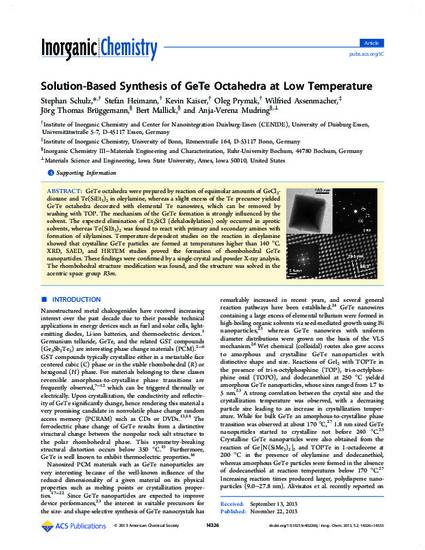
GeTe octahedra were prepared by reaction of equimolar amounts of GeCl2·dioxane and Te(SiEt3)2 in oleylamine, whereas a slight excess of the Te precursor yielded GeTe octahedra decorated with elemental Te nanowires, which can be removed by washing with TOP. The mechanism of the GeTe formation is strongly influenced by the solvent. The expected elimination of Et3SiCl (dehalosilylation) only occurred in aprotic solvents, whereas Te(SiEt3)2 was found to react with primary and secondary amines with formation of silylamines. Temperature-dependent studies on the reaction in oleylamine showed that crystalline GeTe particles are formed at temperatures higher than 140 °C. XRD, SAED, and HRTEM studies proved the formation of rhombohedral GeTe nanoparticles. These findings were confirmed by a single-crystal and powder X-ray analysis. The rhombohedral structure modification was found, and the structure was solved in the acentric space group R3m.
Available at: http://works.bepress.com/anja_mudring/11/

Reprinted with permission from Inorg. Chem., 2013, 52 (24), pp 14326–14333. Copyright (2013) American Chemical Society.